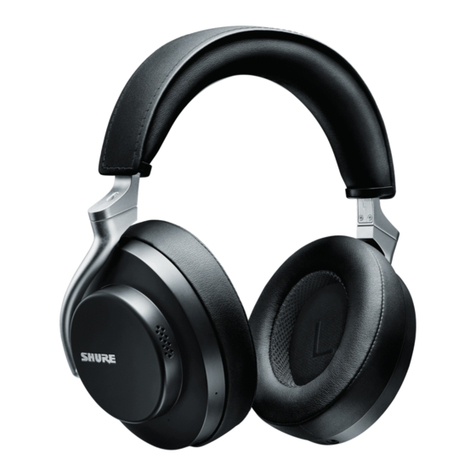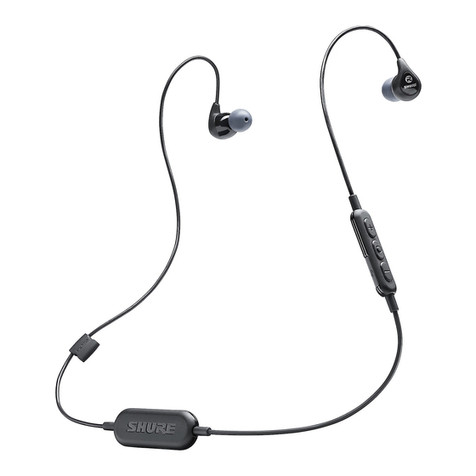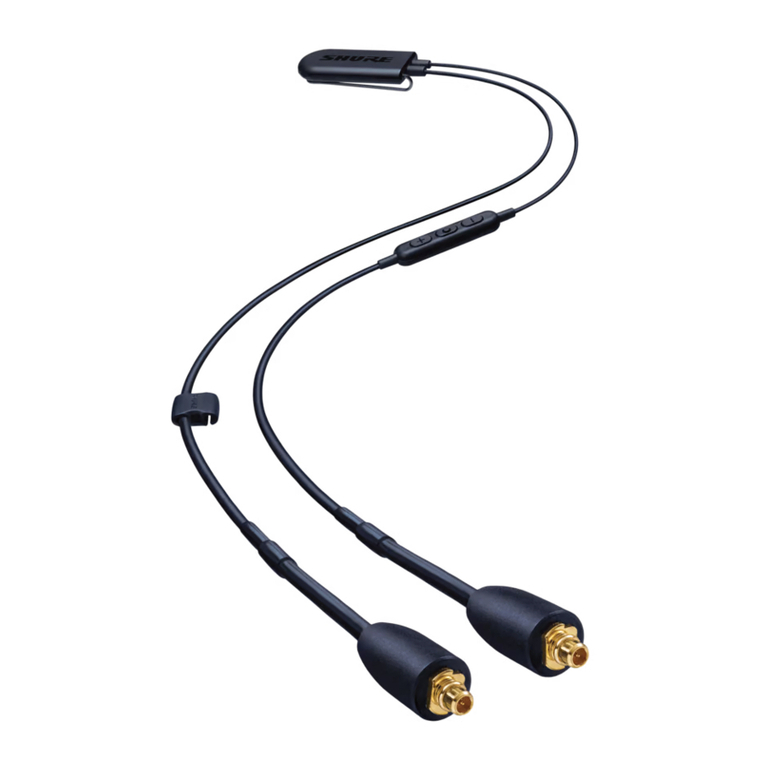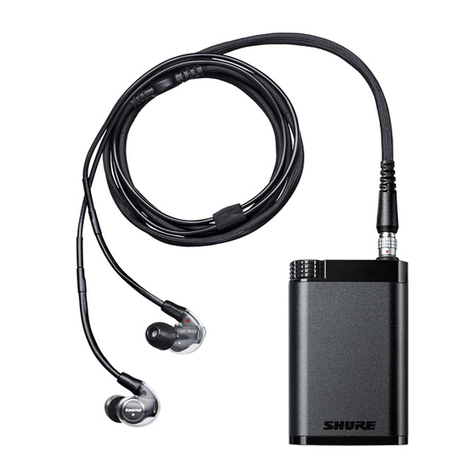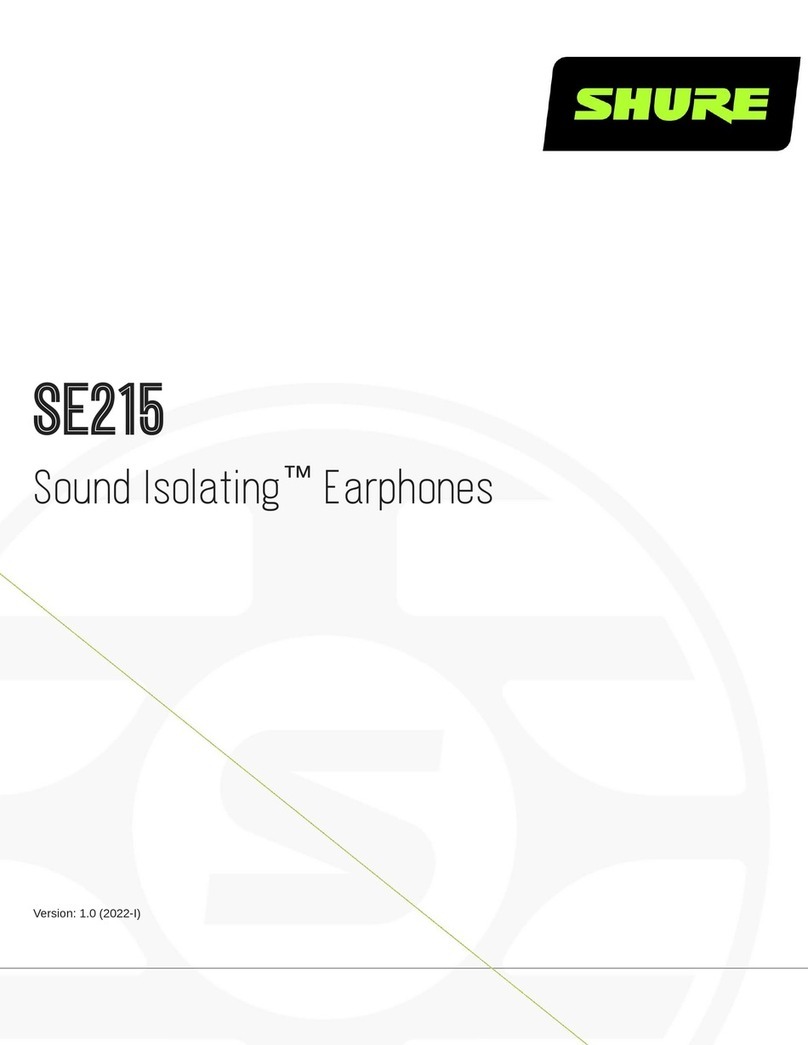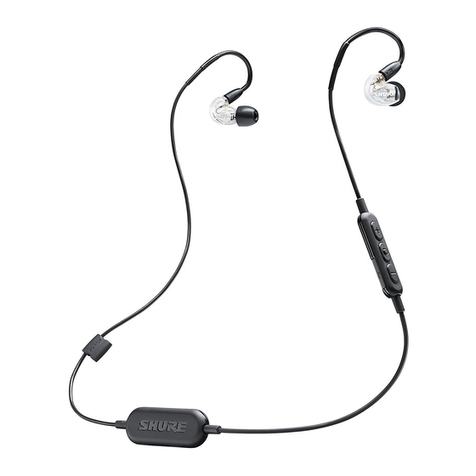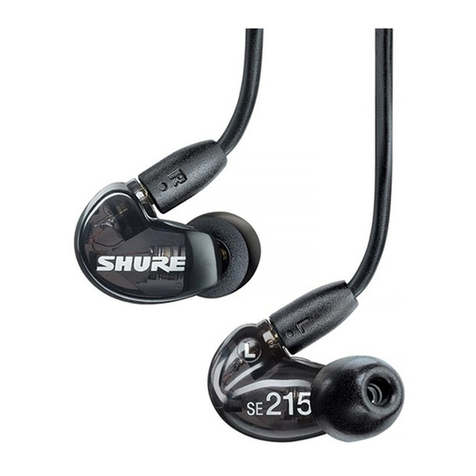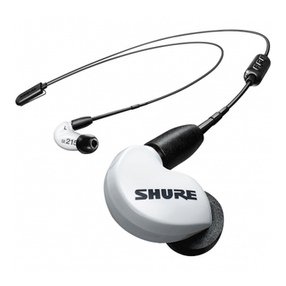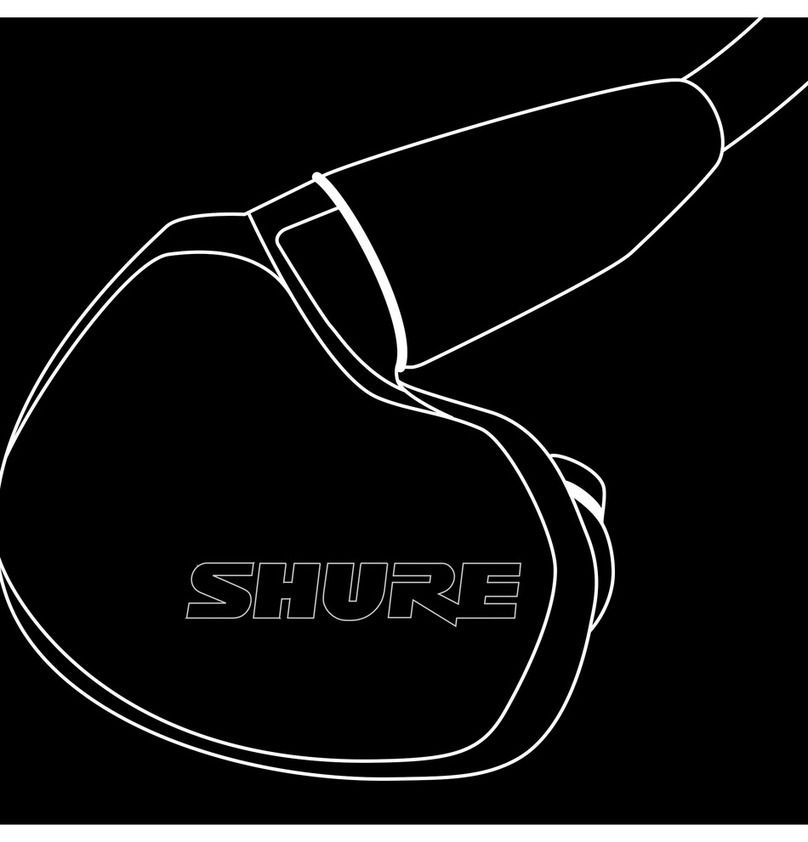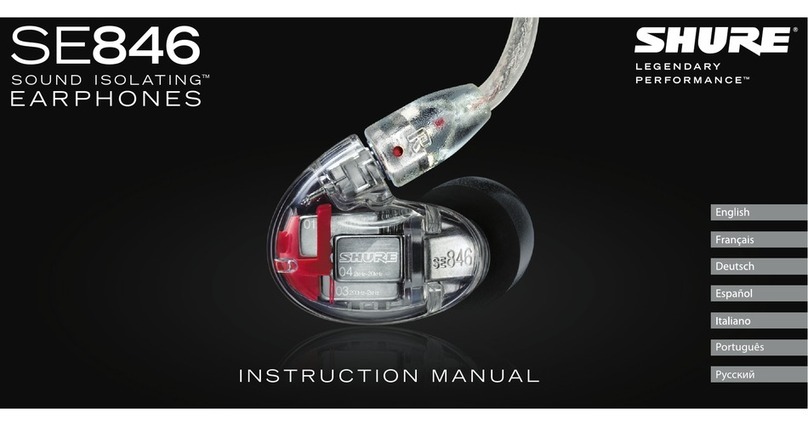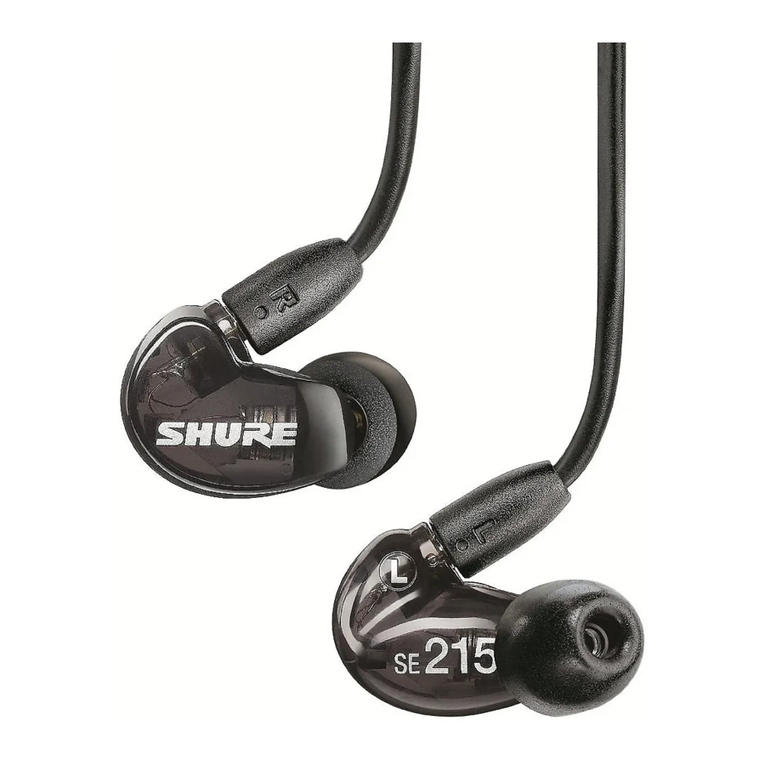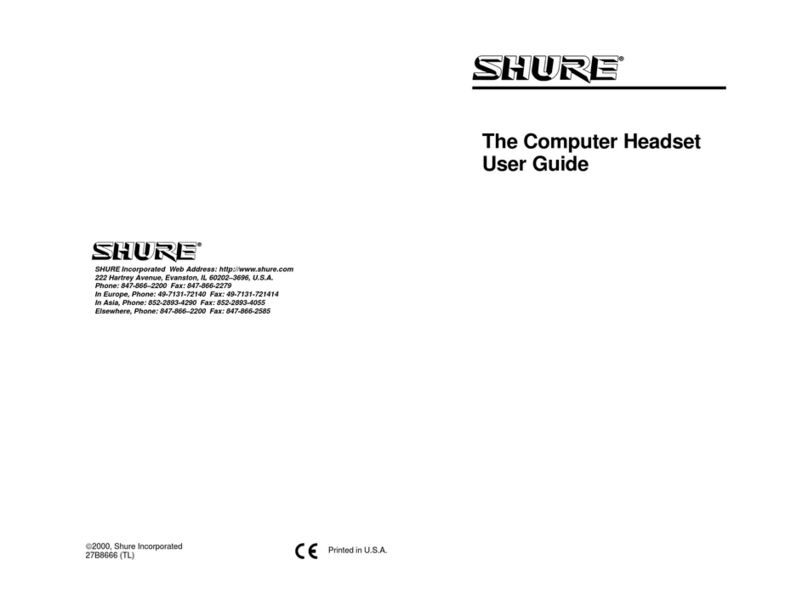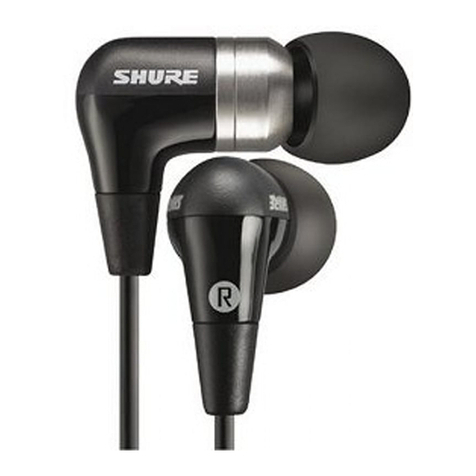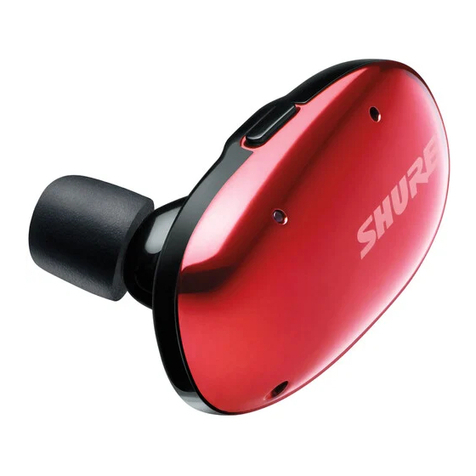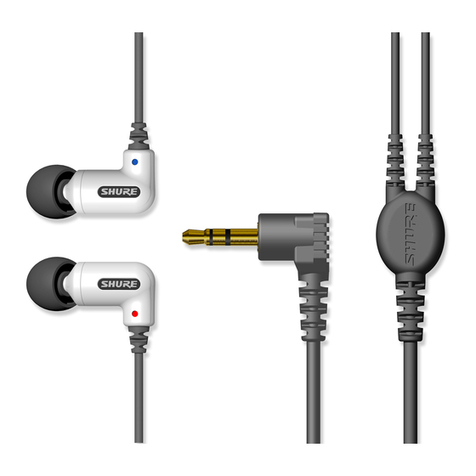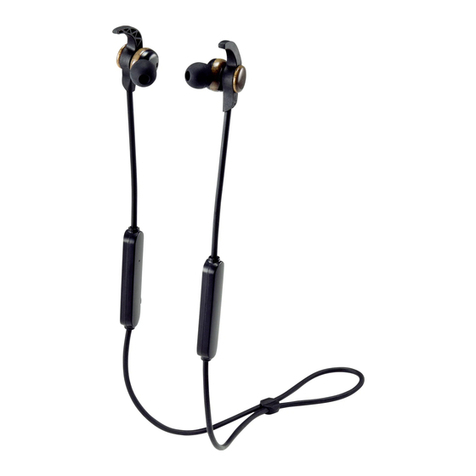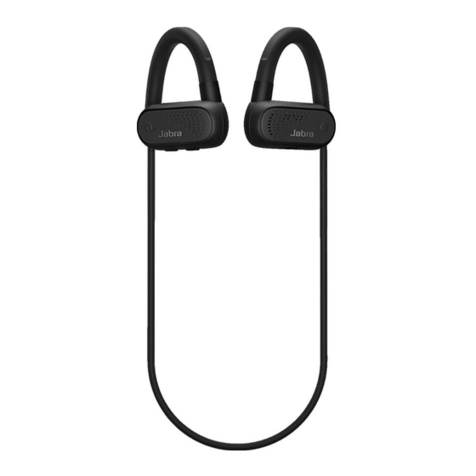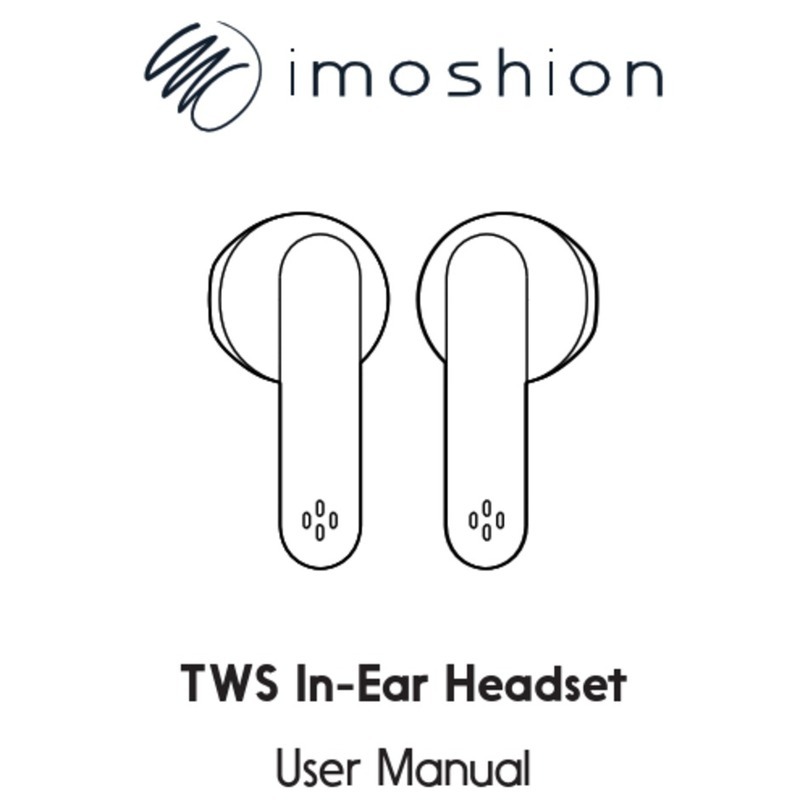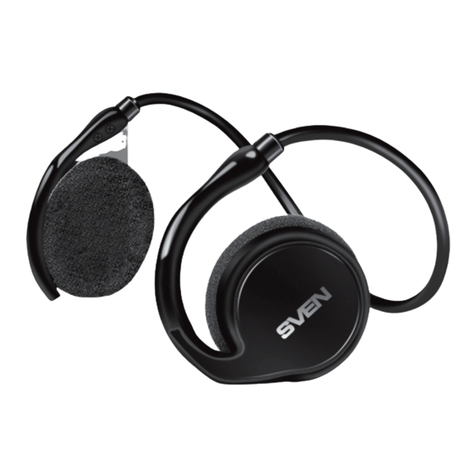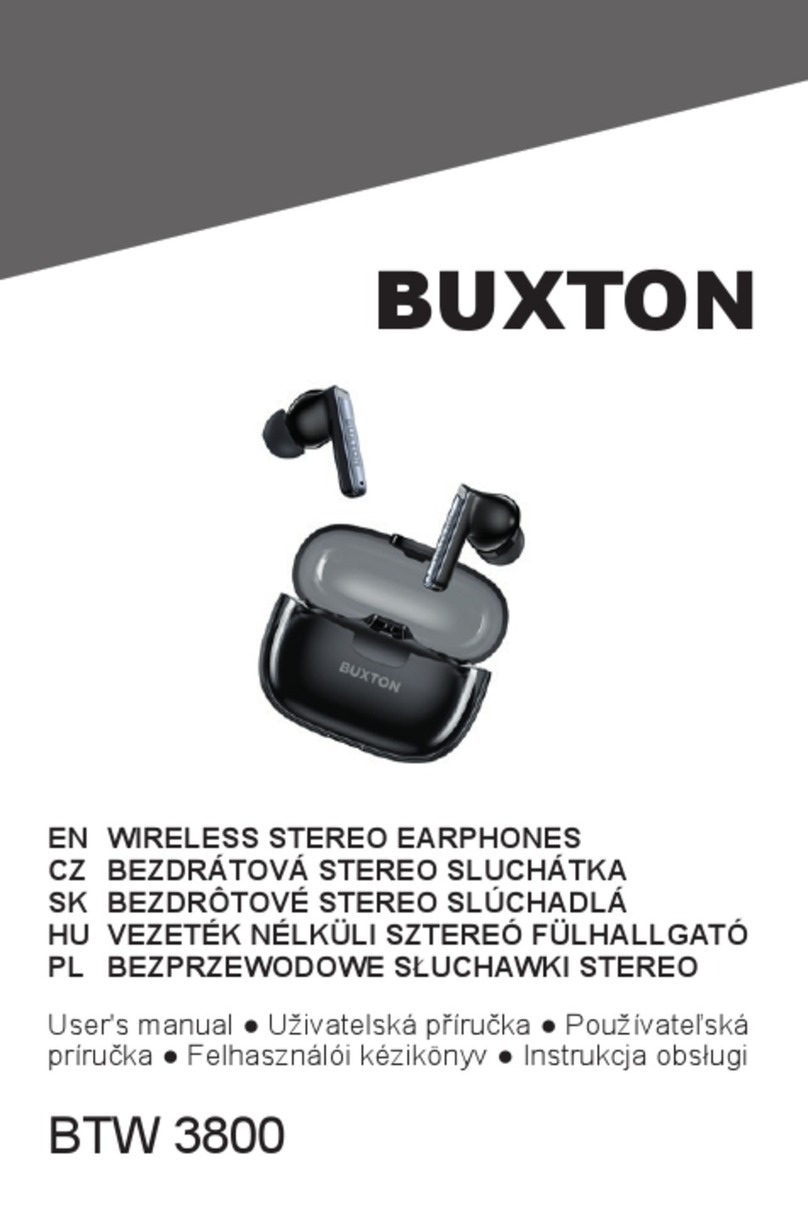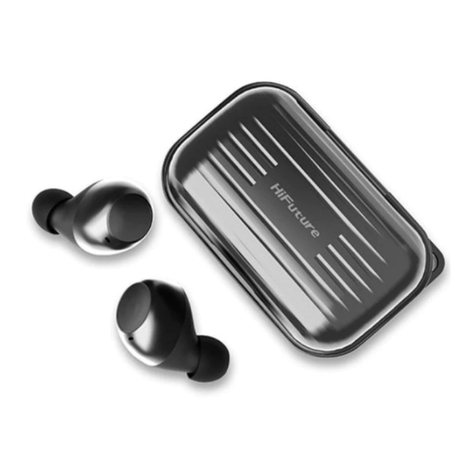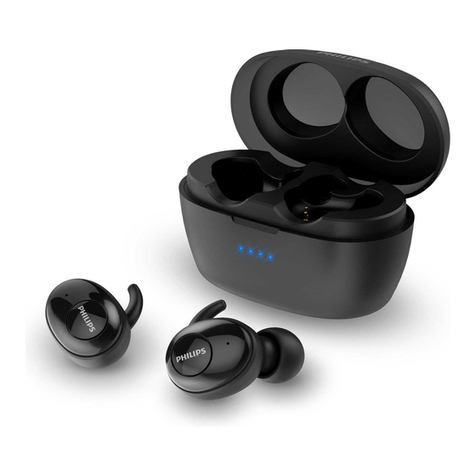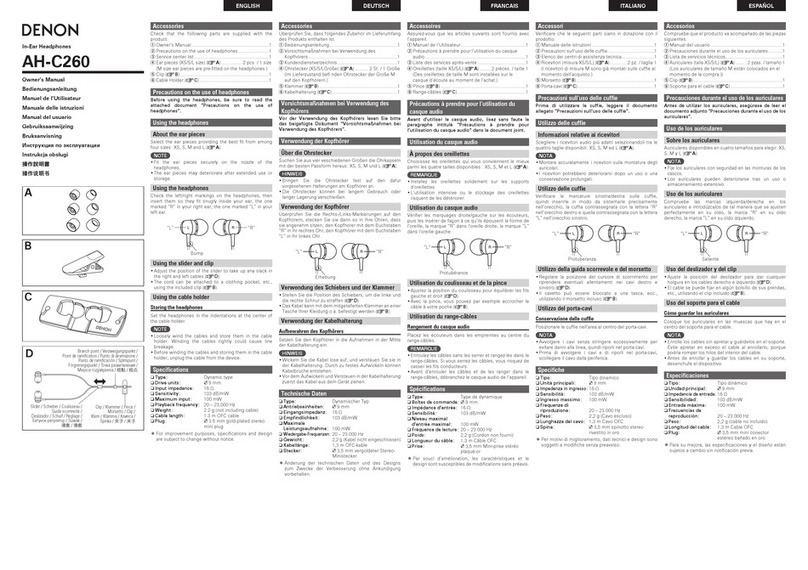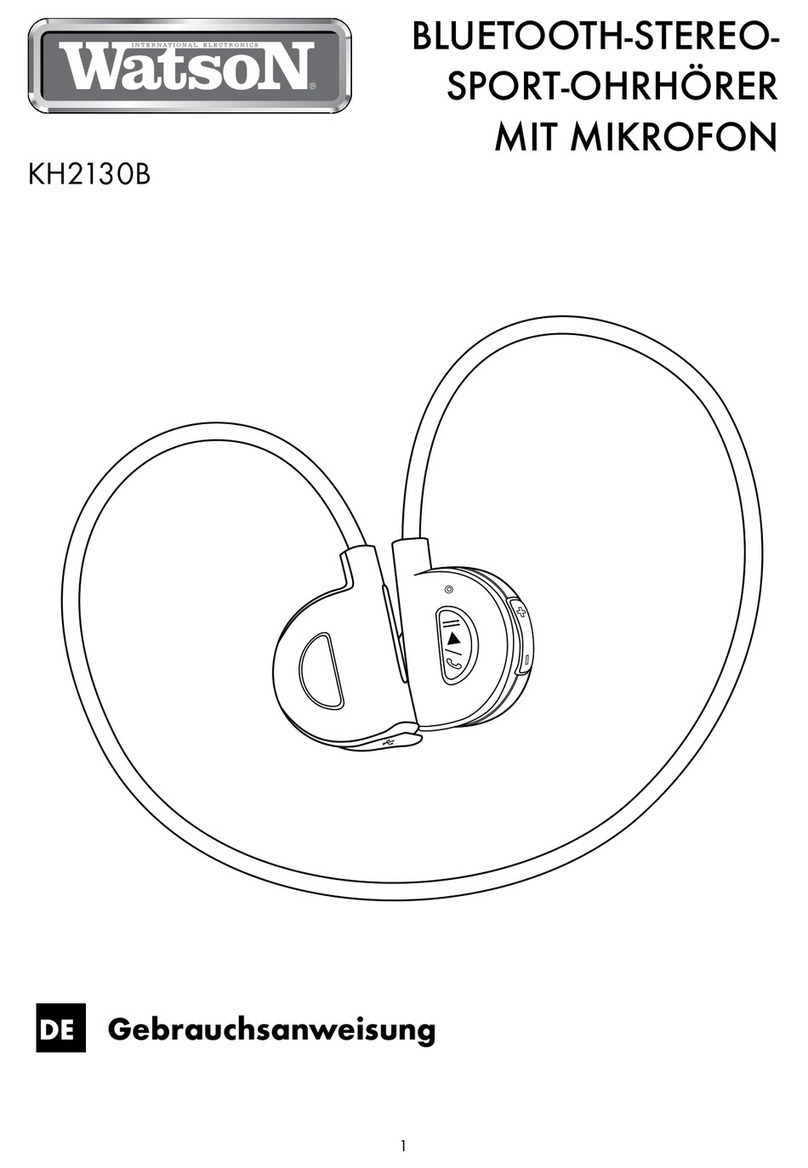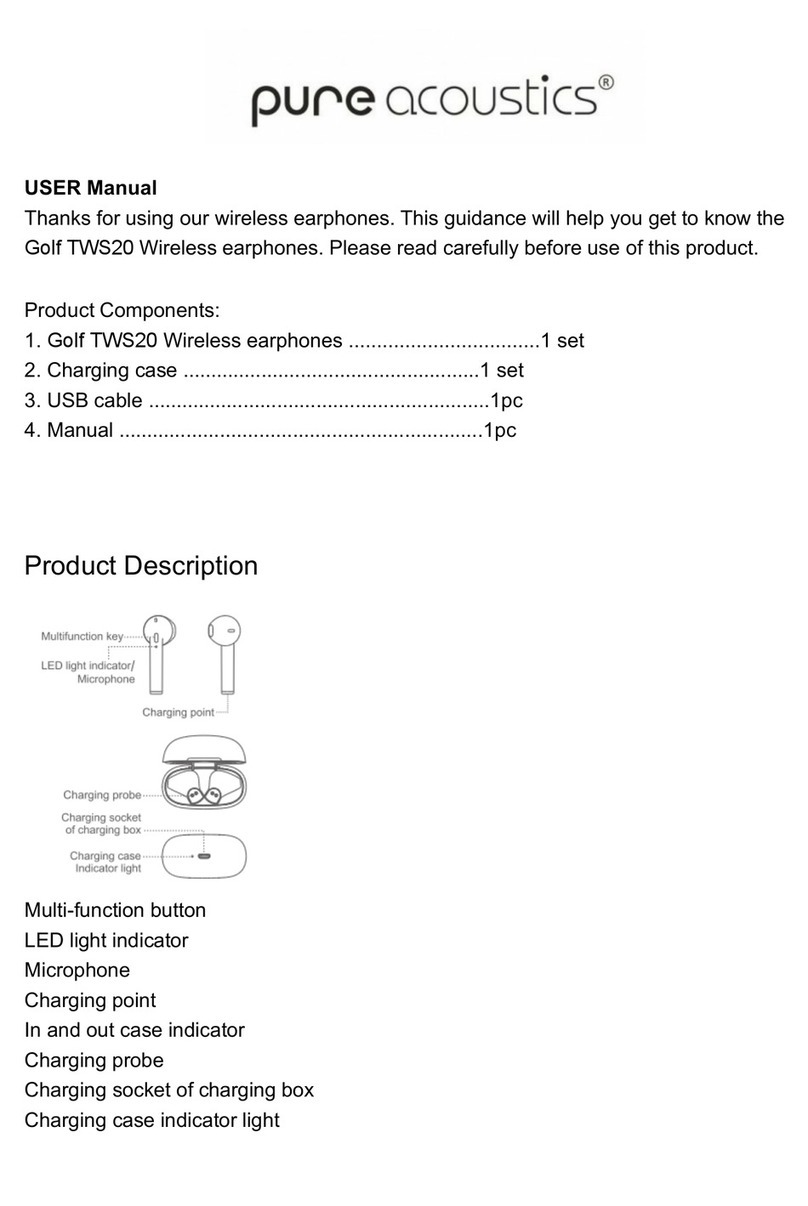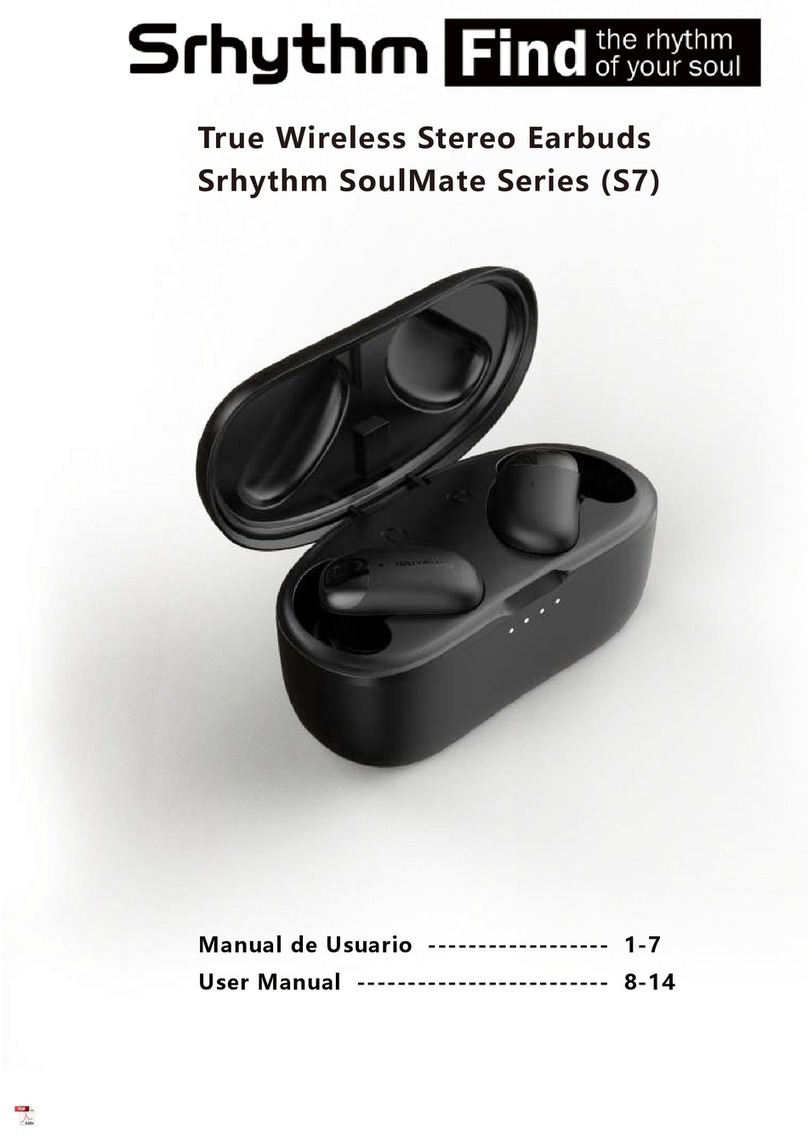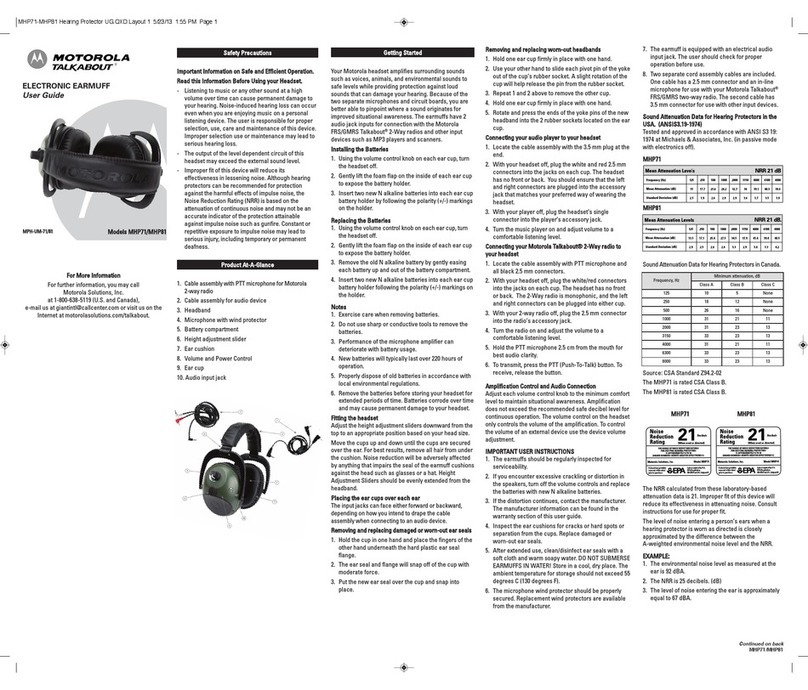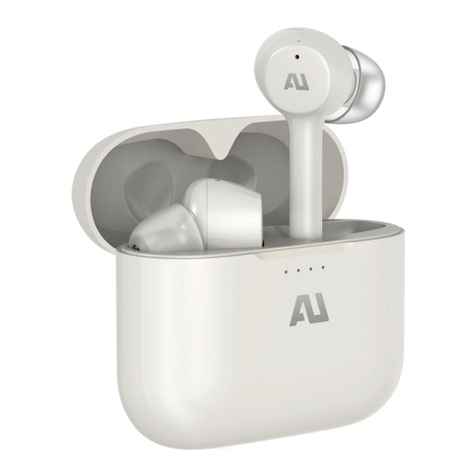
Shure Incorporated
4/14
•
•
•
•
•
•
•
•
•
•
•
•
•
•
•
•
•
•
•
WARNING
LISTENING TO AUDIO AT EXCESSIVE VOLUMES CAN CAUSE PERMANENT HEARING DAMAGE. USE AS LOW A VOL
UME AS POSSIBLE. Over exposure to excessive sound levels can damage your ears resulting in permanent noise-induced
hearing loss (NIHL). Please use the following guidelines established by the Occupational Safety Health Administration (OSHA)
on maximum time exposure to sound pressure levels before hearing damage occurs.
90 dB SPL
at 8 hours
95 dB SPL
at 4 hours
100 dB SPL
at 2 hours
105 dB SPL
at 1 hour
110 dB SPL
at ½ hour
115 dB SPL
at 15 minutes
120 dB SPL
Avoid or damage may occur
WARNING
Do not use when a failure to hear your surroundings could be dangerous, such as while driving, or when biking, walking,
or jogging where traffic is present and accidents could occur.
Keep this product and its accessories out of reach of children. Handling or use by children may pose a risk of death or se
rious injury. Contains small parts and cords that may pose risk of choking or strangulation.
Set the volume level of the audio device to a minimum, and then after connecting the earphones, adjust the volume gradu
ally. Sudden exposure to loud noises could cause hearing damage.
Turn up the volume control only far enough to hear properly.
Ringing in the ears may indicate that the volume level is too high. Try lowering the volume.
If you connect these earphones to an airplane’s sound system, listen at low levels so that loud messages from the pilot do
not cause discomfort.
Have your hearing checked by an audiologist on a regular basis. If you experience wax buildup, discontinue use until a
medical professional has examined your ears.
Failure to use, clean, or maintain earphone sleeves and nozzles according to manufacturer’s instructions may increase
the risk of sleeves detaching from the nozzle and becoming lodged in your ear.
Prior to inserting the earphone, always recheck the sleeve to make sure it is firmly attached to the nozzle.
If a sleeve becomes lodged in your ear, seek skilled medical assistance to remove the sleeve. Damage to the ear may be
caused by non-professionals attempting to remove the sleeve.
Do not attempt to modify this product. Doing so could result in personal injury and/or product failure.
CAUTION
Do not immerse in water, such as while taking a bath or washing your face, otherwise sound deterioration or failures may
result.
Do not use while sleeping as accidents may result.
Use a slow twisting motion to remove the earphones. Never pull on the earphone cord.
Stop using the earphones immediately if they are causing great discomfort, irritation, rash, discharge, or any other uncom
fortable reaction.
If you are currently receiving ear treatment, consult your physician before using this device.
WARNING
Battery packs may explode or release toxic materials. Risk of fire or burns. Do not open, crush, modify, disassemble, heat
above 140°F (60°C), or incinerate.
Follow instructions from manufacturer
Do not short circuit; may cause burns or catch fire
